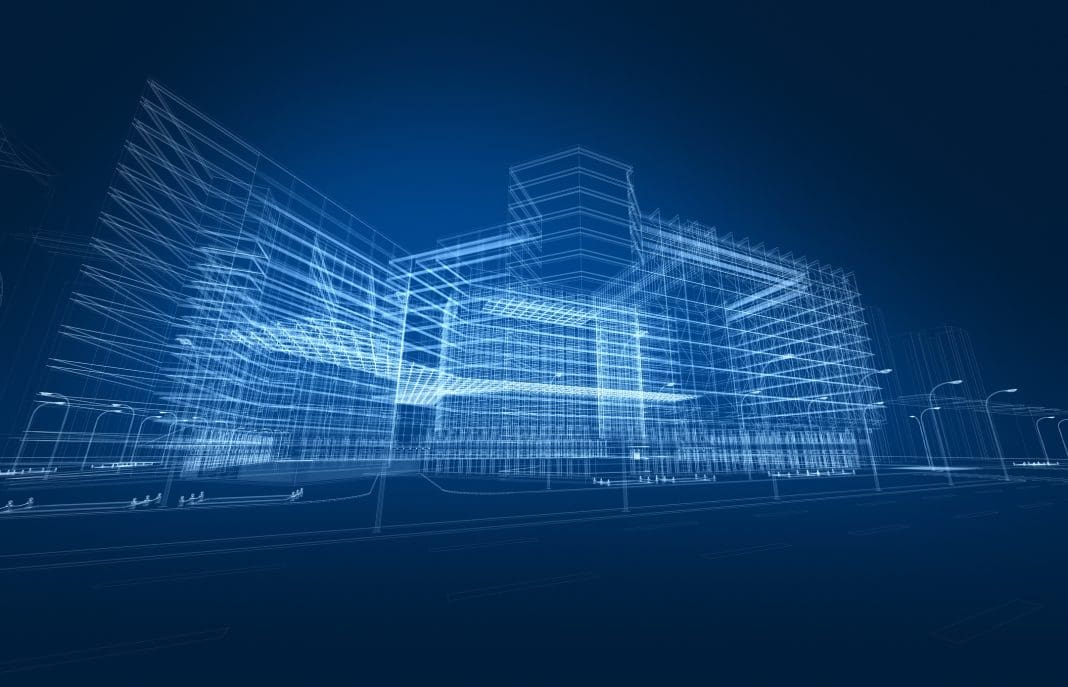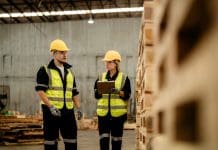The ambition to reach net zero carbon emissions by 2050 is one we are all familiar with, but debate continues around how we get there. Could digital twins hold the key in the built environment? James Franklin, digital construction lead at Kier Strategic Projects, examines the evidence
Both government and private industry are increasingly putting their faith in digital twin technology, particularly as the idea of a national digital twin – a government-supported concept of interconnected digital twins across all sectors – gathers pace.
What is a digital twin?
Put simply, digital twins are mirror images of built assets that are stored virtually. Such systems give us a complete knowledge of an asset, its design, build, intricacies and components to a level which hasn’t previously been possible.
Not only this, but it also allows their operators to monitor and assess the performance of each component throughout its lifecycle.
This can be hugely significant as we push to decarbonise the built environment. By analysing live data from across the building, asset owners and managers can identify efficiencies which can be made to how a built asset is operated.
These efficiencies can, in turn, reduce the operational carbon emissions of that asset, bringing us closer to meeting sustainability goals and, ultimately, reaching net zero.
However, when it comes to the public sector estate, to date the focus has been somewhat theoretical – until now.
Together with the MoJ at HMP Five Wells, Kier is in the first phase of implementing a digital twin approach and is already getting a sense of the extent of the potential energy and carbon savings on offer. This project continues Kier’s work at Five Wells, having originally constructed the prison.
Measuring digital twin impact
This digital twin pathfinder project, run in partnership with the MoJ, Glider and Future Decisions, aims to research and feedback on digital twin technology implemented on MoJ property, with a focus on energy-use reduction in lifecycle operation within a secure environment.
HMP Five Wells itself is an adult male Category C resettlement prison, made up of nine buildings and 1,700 cells. It forms part of the MoJ’s plan to create an additional 20,000 safe, secure and decent prison places across its estate.
As part of the prison’s construction, the MoJ specified the use of a Building Management System (BMS) to provide data about how the building is used.
This BMS has been providing datasets since Five Wells’ completion, but there was a collective ambition to go further. To this end, in February 2023 we moved forward with plans to set up a digital twin.
The first phase of this project has been running since July 2023 and is due to finish by the end of the year. This phase begins the build of the digital twin and starts to develop a link between the static building data already gathered and the live performance data our digital twin upgrades allow.
This work allows us to collect data to prove the benefits and energy savings that a digital twin can deliver at the facility, demonstrating how its use can make it run more efficiently, cost-effectively and sustainably.
Retrofitting digital twins for the MoJ estate
In the new year, the project’s second phase will begin, giving us more data and more control of how the building operates, allowing us better control.
For example, we can only currently control underfloor heating by floor – we will install kit to be able to manage this by wing or by cell, increasing operational flexibility.
Our initial findings from the first phase are already starting to show us that implementing digital twin technology can have a huge impact, not just at Five Wells but across the MoJ’s estate.
We are confident that our success at Five Wells will continue, giving us scope to look at how we can retrofit digital twins on the MoJ’s wider estate, with a view to decarbonising the prison sector through the use of this technology.
As part of our alliance role on the New Prisons’ Programme, this will include translating learnings to other sites nationwide, as well as sharing knowledge
and insights with other project partners.
Collaboration is the key to success
There is no doubt that the lessons we learn here will be invaluable – not just to the prison sector but to the public sector estate at large. Collaboration is the other key to success – to make a real impact we can’t work in silos but must share learnings, taking the knowledge digital twins give us on individual sites to make improvements everywhere.
The net zero challenge is not going away and it is everyone’s responsibility to deliver against targets by creating innovations in their respective industries. In the built environment, it is becoming increasingly clear that digital construction techniques are a key part of the decarbonisation agenda.
This is why our early successes in terms of potential energy savings at HMP Five Wells are so important. We believe in the power of digital twins to transform our decarbonisation efforts, and that our work will show they are a viable path by which we can reach our net zero goals.
The challenge now is to work collaboratively to roll out the use of digital twins across the public sector estate and create a more efficient and sustainable built environment. We have the technology, and we are building the evidence that it works. Soon it will be time to find out just how far it can take us.
James Franklin
Digital construction lead
Kier Strategic Projects

















